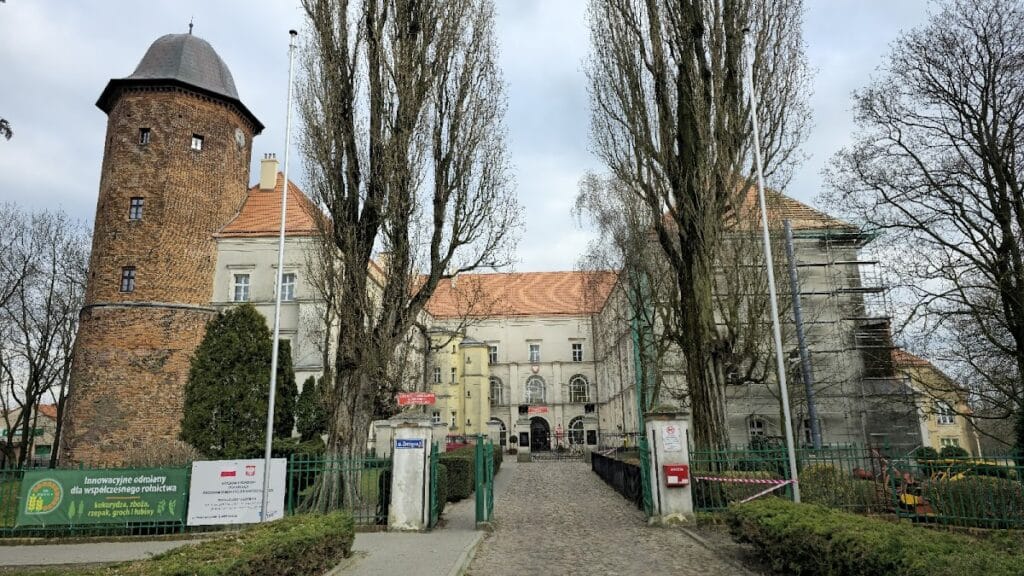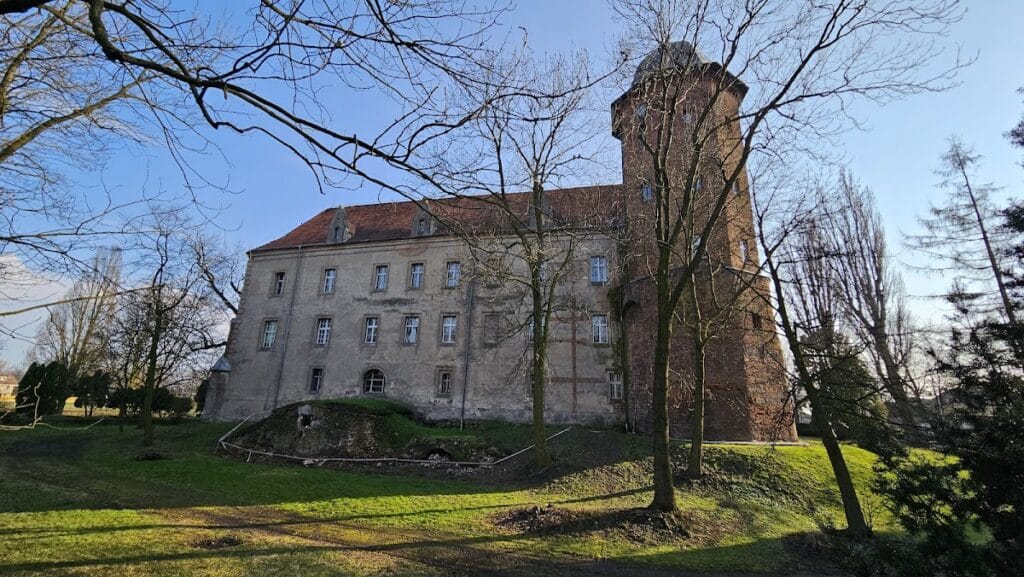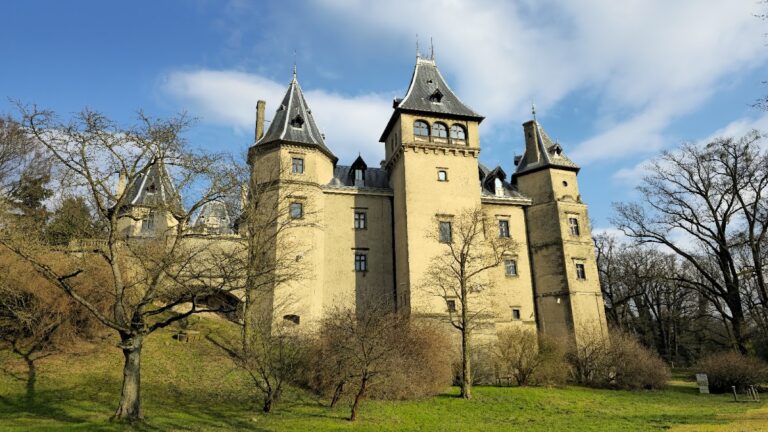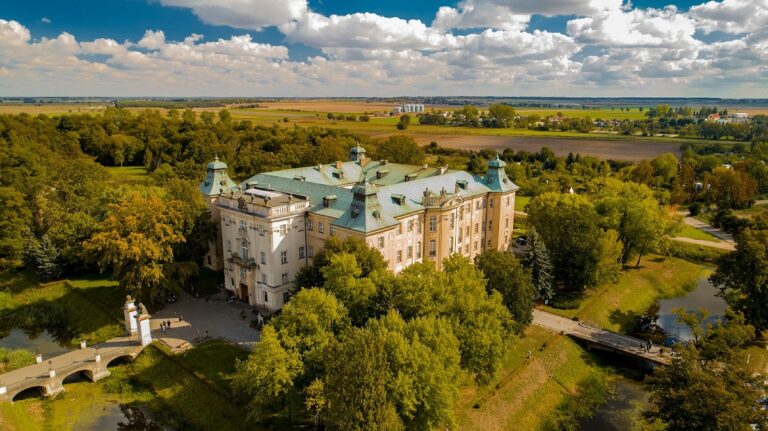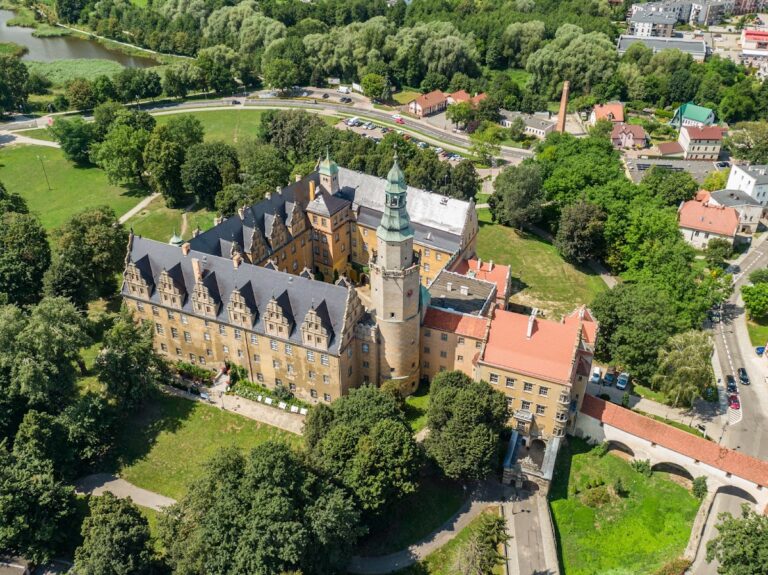Koźmin Wielkopolski Castle: A Historic Fortress and Residence in Poland
Visitor Information
Google Rating: 4.3
Popularity: Low
Google Maps: View on Google Maps
Official Website: kozminwlkp.pl
Country: Poland
Civilization: Medieval European
Remains: Military
History
Koźmin Wielkopolski Castle is located in the town of Koźmin Wielkopolski, Poland, and was originally built by medieval Polish knights during the 14th century. The fortress arose when Koźmin was a royal town, signifying its importance within the Kingdom of Poland.
The castle’s construction likely began in the latter half of the 1300s under the guidance of Bartosz Wezenborg, the voivode (provincial governor) of Poznań. He received the town from King Casimir the Great following the removal of the previous owner, Maćko Borkowic, who had been convicted of treason. This initial phase established the structure as a stronghold and administrative center in this region.
Between 1419 and 1449, the castle underwent significant enlargement under Mościc Przedpełkowicz, castellan of Poznań, reflecting its continued strategic and residential role. Over the next century, ownership passed among several noble families, including Hińcza of Rogów from 1449, then the Koźmiński family starting in 1471, and subsequently the influential Górka family in the early 1500s.
During the early 16th century, Andrzej II Górka initiated a major transformation, converting the fortress from a primarily defensive castle into a Renaissance-style residence. He added three wings with three stories each, enclosed by a curtain wall, while preserving the original octagonal tower from the medieval period. This renovation symbolized a shift toward more comfortable and prestigious noble living rather than strict military utility.
The 17th century brought Baroque modifications under the voivode Stanisław Przyjemski. The castle gained political significance when it hosted King Sigismund III Vasa and his son Władysław in 1623. Four years later, a Swedish delegation visited, highlighting the castle’s role as a site of diplomatic activity during turbulent times in Polish history.
In the 18th century, a sequence of ownership changes took place, often through marriage alliances. The Sapieha family counted among the proprietors before the castle came into the hands of Prussian cavalry field marshal Fryderyk Adolf Kalkreuth in 1791. Notably, Kalkreuth’s wife ordered the demolition of the medieval western wing, a decision that contributed to financial difficulties and ultimately the family’s bankruptcy.
The 19th century saw a dramatic shift as the castle was auctioned following bankruptcy. In 1841, Karol Zygmunt Graetz acquired the property. Subsequently, in 1855, the castle was purchased by the Poznań School College for 9,000 talers with the intent to repurpose it as an evangelical teacher seminary. Structural problems surfaced during renovation works, including the collapse of part of the northern wing and subsidence of the roof. These issues delayed the institution’s opening until 1865.
During the Greater Poland Uprising in the early 20th century, the castle served as both a military command center and a hospital. Between 1919 and 1932, it became home to courses of the Polish State Male Teacher Seminary. After the end of World War II in 1945, the castle accommodated educational facilities and also housed the Museum of the Koźmin Land, reflecting its ongoing cultural and communal importance.
Remains
Koźmin Wielkopolski Castle was originally constructed on a rectangular, or quadrilateral, layout, featuring an octagonal medieval tower that forms the most prominent architectural element of the complex. The building was primarily made of masonry, typical of castle construction in this region during the medieval period, and the original stone tower has survived through centuries of rebuilding and modification.
The Renaissance period saw the addition of three separate wings, each rising three stories high, which framed the courtyard and enclosed the castle on multiple sides. Surrounding these wings is a curtain wall, a defensive wall built to protect the inner structures. This integration of Renaissance residential architecture with medieval fortifications is a defining characteristic of the castle’s plan.
In the 18th century, a free-standing two-story structure was added next to the southern wing, reflecting changes in use and expansion beyond the original core fortress. However, the medieval western wing, once part of the fortified complex, was demolished through orders from Charlotta Kalkreuth, the field marshal’s wife. This loss altered the castle’s balance and contributed to its unstable structural condition.
The 19th-century renovation efforts to convert the castle into a seminary led to significant architectural challenges. During these works, the northern wing partly collapsed, and the roof of the castle subsided, delaying its adaptation for educational purposes. Such damage has left parts of the castle in a vulnerable and altered state, requiring subsequent restorations.
Surrounding the castle is a park that was included in its estate when purchased by the Poznań School College. This green space complements the castle grounds, contributing to the overall historical setting of the site.
Today, the most visible remains of Koźmin Wielkopolski Castle include the enduring octagonal tower, the Renaissance wings with their sturdy masonry, and the curtain wall. Although some sections have been lost or suffered damage, the site retains its layered historical character, displaying medieval foundations alongside Renaissance and Baroque adaptations.
